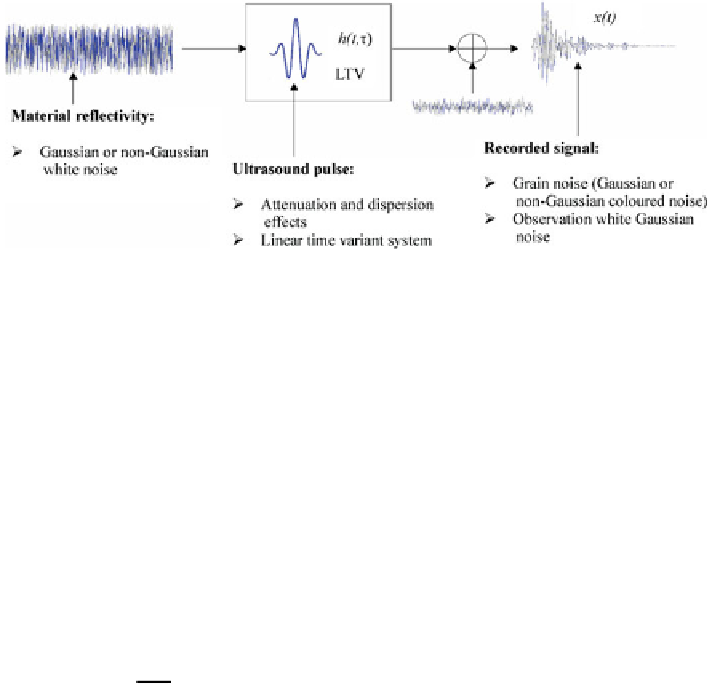Information Technology Reference
In-Depth Information
Fig. 6.1
The through-transmission linear time variant model
R
f
2
ð
f
f
c
ð
t
ÞÞ
2
P
x
ð
f
;
t
Þ
df
f
1
Bandwidth BW
ð
Þ
: us
ð
t
Þ¼
BW
ð
t
Þ¼
ð
6
:
3
Þ
R
f
2
P
x
ð
f
;
t
Þ
df
f
1
Maximum frequency amplitude (Afmax): us
ð
t
Þ¼
max P
x
ð
f
;
t
Þ
ð
6
:
4
Þ
These signatures are measures of the spectral content variations that are affected
by the ultrasonic pulse travelling inside the material. They can be estimated by
means of well-known smoothing techniques of time-frequency spectral analysis
[
7
].
From us
ð
t
Þ
, we can obtain features in different forms. For example, the time
t
1
t
0
R
t
1
1
average value
us
ð
t
Þ
dt or the instantaneous value at one particular time
t
0
instantus
ð
t
0
Þ
can be elements of the feature vector in the observation space. Other
time-domain features, such as the parameters A and b corresponding to an expo-
nential model of the signal attenuation x
ð
t
Þ¼
Ae
bt
or the total signal power
received P
¼
R
0
j
x
ð
t
Þj
2
dt
=:
T
;
are also possible to complement the frequency-
domain features.
More features can be defined considering special conditions of the through-
transmission model. For example, higher-order statistics can be used to detect the
possible degree of non-gaussianity of the reflectivity by measuring higher-order
moments of the received signal like HOM
¼
Ex
ð
nT
s
Þ
x
ðð
n
1
Þ
T
s
Þ½
x
ðð
n
2
Þ
T
s
Þ
0, where E
½
means statistical expectation and 1
=
T
s
is the sampling frequency.
Departures from the linear model of Fig.
6.1
can be tested in different forms, for
example,
using
the
so-called
time-reversibility
[
8
],
which
is
defined
by
"
#
3
dx
ð
t
Þ
dt
TR
¼
E
.


Search WWH ::

Custom Search